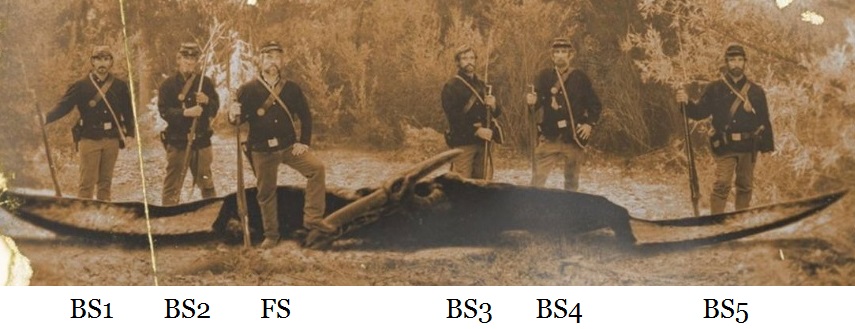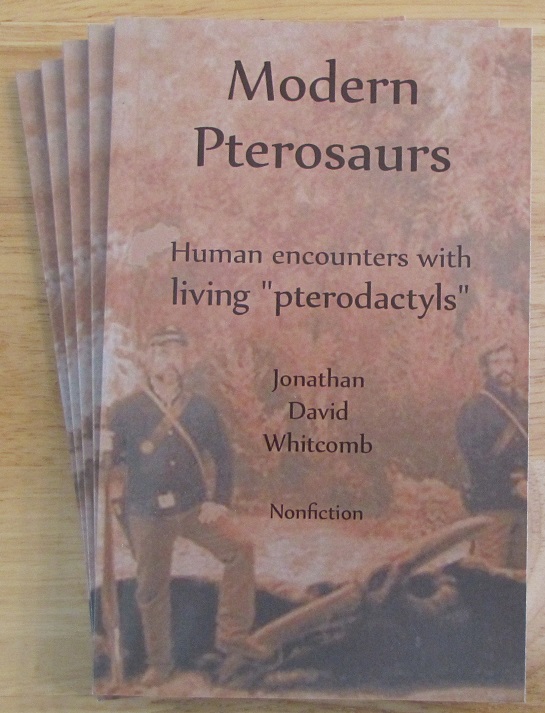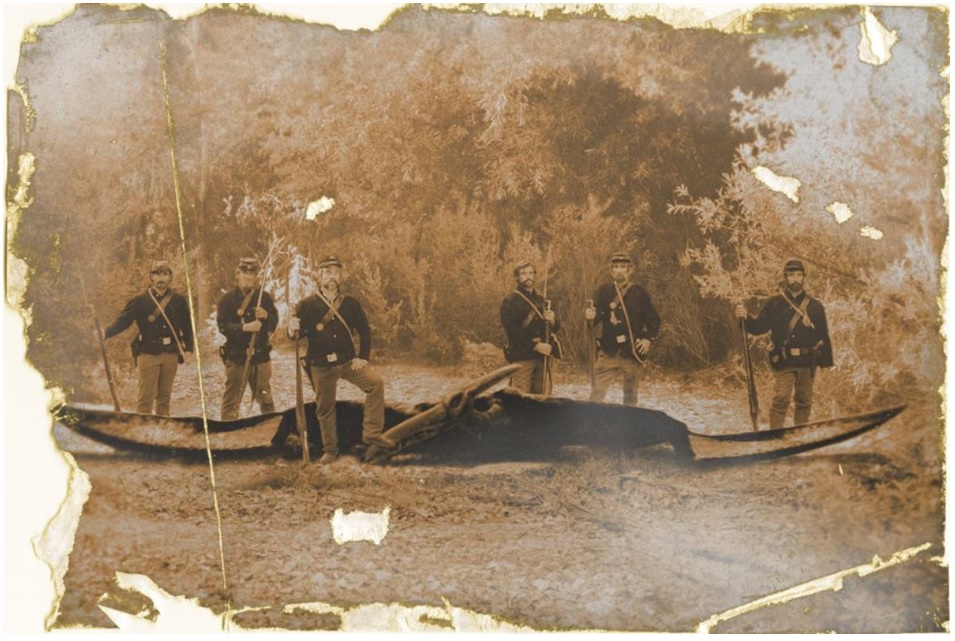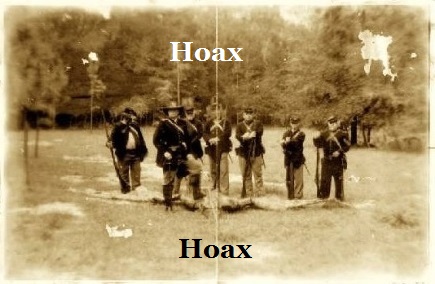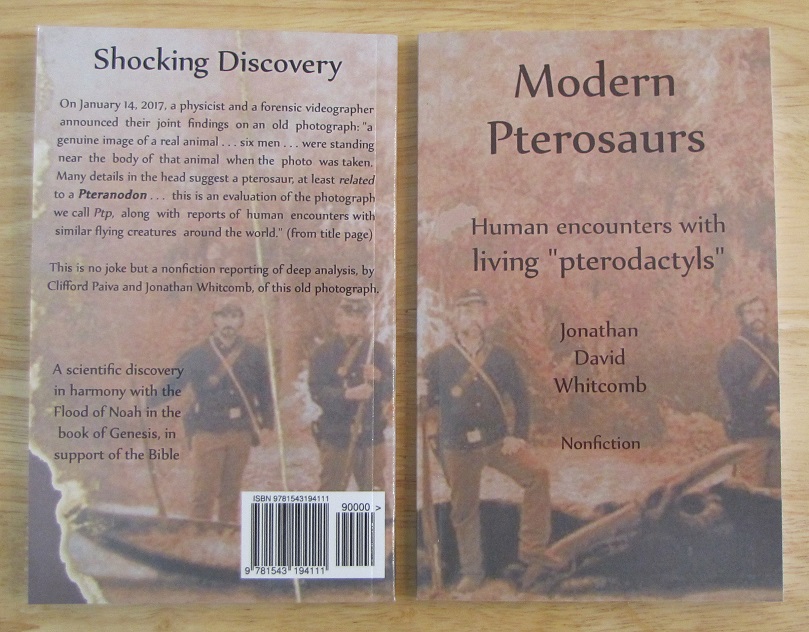By Jonathan D. Whitcomb, expert on sighting reports of apparent modern pterosaurs
Update: On November 4, 2018, I began apologizing for a mistake that I had made, for I failed to patiently wait for evidence of adequate provenance for this apparent 19th-century “photograph.” I even published a book whose content was largely related to this Ptp image. I am sorry for any and all problems that this may have caused.
I still fully support the many eyewitness testimonies, the great majority of which were of encounters in the 20th and 21st centuries. I only withdraw my support for this (Ptp) image.
I have stopped publication (print-on-demand) of my book Modern Pterosaurs because of this “problem,” or whatever people want to call it. That book was mostly about this apparently old photo. I take responsibility for my own mistakes; I blame nobody else.
I am going ahead with publication of another book, The Girl who saw a Flying Dinosaur, for it is about eyewitness encounters with these flying creatures (nothing about Ptp). In addition, my other books about modern living pterosaurs should not be in any way related to this error of judgment of mine, regarding Ptp. Those other nonfiction books do not mention Ptp.
__________________________________________________________________
[Original post on Live Pterosaur]
Background
On January 14, 2017, Clifford Paiva (physicist) and I agreed that this photograph (now labeled “Ptp”) contains a genuine photographic image of a modern pterosaur. Criticisms by skeptics have been answered, and we found additional evidence for the veracity of this photo.
Paiva has done a detailed analysis of the image. He found that the shadow under the boot of one soldier (he’s now known as “FS” for front-soldier) is consistent with shadows under and on the animal. Paiva also found details in the head, neck, and shoulder of the animal, details that closely correlate with the anatomy of the Pteranodon. Please be aware that we do not declare that this animal must have been of some species of Pteranodon, but we point out that it appears to be at least similar to that type of pterosaur.
In recent weeks, we have found other evidence that supports the theory that this photograph is what it appears to be, that six men were standing, in the 19th century, next to the body of the recently-deceased animal that is shown. I have pointed out the apparent drag-mark on the ground, showing the direction from which the body was dragged; Paiva then pointed out the very small tree that appears to have been broken down to allow the animal to be dragged to the place where it was photographed. We do not proclaim that none of the body of the animal was lifted when it was moved, but it does appear that some dragging took place.
.
Introduction to Belt-Buckles and Buttons
Over the past few weeks, I have come to better appreciate the importance of the animal shown in Ptp, the details in the soldiers being much less important. But on February 10, 2017, I decided to test the idea that the six men were standing as they appeared to have stood, for some skeptics have suggested ideas related to digital image manipulation of those human figures. Apparently those skeptics were thinking that if the soldiers were not what they appeared to be, the animal shown could be dismissed as well.
One soldier caught my attention: the man with his boot on the beak of the apparent Pteranodon. If this is a genuine photograph of six men, the one appearing in front would be closer to the camera. I then decided to measure the widths of belt buckles on those men in Ptp. Belt buckles appeared to be much better than other details of the men’s bodies and clothing, for they’re much more likely to have been of the same size. I later decided to also measure buttons.
Distances of the Apparent Civil War Soldiers From the Camera
The five soldiers standing behind the apparent pterosaur were named for “back-soldier,” and the man in front for “front-soldier.” The following shows what was measured:
- BS1 belt-buckle and button
- BS2 ” ” ” “
- BS3 (nothing)
- BS4 belt-buckle
- BS5 belt-buckle and button
- FS ” ” ” “
I magnified the original image until the pixels could be counted on the belt buckles. The man BS3 is turned to one side, so I did not try to measure anything on him. Here are the results for buckle width in pixels:
- BS1: 8
- BS2: 9
- BS4: 10
- BS5: 9
- FS: 11
Notice that the man who appears to have been closer to the camera has the greatest pixel-width of his belt buckle. That is consistent with the idea that he was actually standing a bit closer to the camera than were the other men.
It could be argued that FS has his hip turned, because of one foot being raised higher than the other: That alone could easily make his buckle at least one pixel wider. But notice soldier BS4: his buckle is turned in the same way, yet the pixel count is smaller than for FS. And look at the count for BS1: 3 pixels smaller than for FS. The twisting of the buckle on FS might make a difference of up to two pixels when compared with BS1, but not likely three pixels.
A skeptic may declare that those differences are small. Consider this: Compared with the distance from the camera to the animal shown, the differences involving the soldiers is also small. For the image to be genuine, you would expect FS to have only a slightly wider belt buckle pixel-width, and that is exactly what we find.
I then measured pixel widths of buttons, finding this:
- BS1: 3
- BS2: 3
- BS5: 3
- FS: 4
Buttons are consistent with belt buckles, supporting the idea that the men were actually standing as they appear to be, with one soldier measurably closer to the camera than the other men are from the camera.
###
Copyright 2017 and 2018 Jonathan D. Whitcomb (“More Evidence for the Civil War Pterodactyl Photo“)
.
Old photo of a pterosaur was declared genuine (but no more)
“Support Removed for Ptp Photograph”
.
Years ago, a scientist in California began noticing details in a photograph, clues that the image of an apparent modern pterosaur was genuine. On January 14, 2017, I spoke with Clifford Paiva (a physicist) by phone. We agreed that the photo (now labeled “Ptp”) has a genuine photographic image of a modern pterosaur.
.
The Girl who saw a Flying Dinosaur
Nonfiction book for readers 8-14 years old (by Whitcomb)
.
Scientific Paper on Living Pterosaurs
The peer-reviewed Creation Research Society Quarterly (CRSQ), Volume 45, Number 3, contains the article “Reports of Living Pterosaurs in the Southwest Pacific,” by Jonathan D. Whitcomb.
.
Modern Pterosaurs – this book has been removed from publication
From the first chapter of this nonfiction book:
In the summer of 2014, a well-known biology professor at a Midwestern university wrote a scathing blog post about my online writings concerning apparent modern pterosaurs. It included ridiculing the lack of photos of the creatures on my web pages. Whatever pages he had seen, it appears he failed to notice the ones that examined the photo now called Ptp.
.

